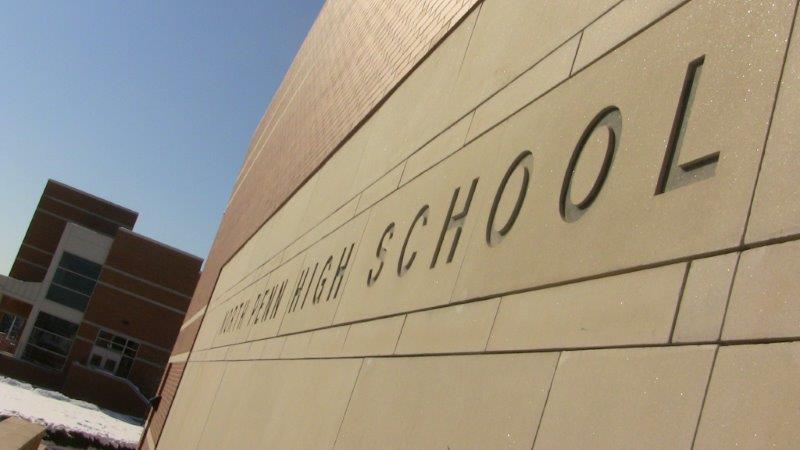The potential threat inside America’s classroom
Image courtesy of www.npsd.phanfare.com
File photo
January 2, 2015
Gun Control: the mere two words send shivers down the spines of Republicans and Democrats alike. In a country where the word ‘arms’ is mentioned in the first hundred words of our Bill of Rights, that very same word has been the scapegoat of modern day violence. As a nation we have hypothesized numerous solutions to fix this pandemic of gun related violence that’s spreading to many areas across the US, from Newtown to Aurora to Columbine.
When examining school violence related to guns, one can say that it has happened too many times before that armed men, insane and malicious-minded, have entered the school grounds and shot children and teachers. After all, one time is certainly too many. But it seems like it has become a major reoccurring threat now to the safety of our children in schools. In response to this crisis, many have thought about arming school staff members and teachers in order to protect the kids inside schools walls.
This is now becoming a hot issue; do we go as far as arming teachers in order to prevent violence in schools? Do we train them to fight back when a threat poses harmful to students? How far do we specifically train teachers to act against a gunman? The conflict is definitely a sensitive one with distinct opposing viewpoints: arming teachers vs keeping them unarmed.
If schools in America were to allow teachers and staff to bear arms in the classroom, there would be the obvious benefits. First, people who are in favor of this decision make the strong point that gunman might be more hesitant about entering a school with gun-toting staff inside. Prevention could certainly be the best way to stop school related violence in its tracks. In cities where concealed guns are allowed to be carried by the public, crime actually decreases. The frequency of incidents with firearms might decline in schools if the same idea is paralleled in the real world.
People also say that teachers and staff have a right to defend themselves in the place they work. Just because teachers signed up for this occupation doesn’t mean they have to sit helpless and defenseless while an armed intruder walks into the classroom. For reasons that speak for themselves, teachers should have the right to fire back if the lives in the classroom, along with their own, are endangered.
Despite valid reasons for arming teachers in the classroom, there is strong opposition to it. Those who are against it say that it is a huge safety issue. Having a loaded gun in the classroom might be just as detrimental or hazardous to those in the building than an armed intruder. The gun is already there, only taking a curious student or a mentally unstable child to find it and possibly fire it.
The parents’ concerns must also be taken into perspective. I’m sure most parents would rather have the absence of a firearm than the presence of one in the place where their child is learning.
And then there’s the glaring fact that in the instance that a gunman was to enter a school and start firing, a teacher who possibly had a gun themselves would most likely fire back. This poses a threat to the rest of the school because not only is there one gun being fired, but now there are two. And this doesn’t include the other teachers who may conceal weapons that join in on now what is a ‘firefight’ in the hallways, endangering more lives than what was previously jeopardized.
Supporters of anti-gun schools additionally make the possibility that if anybody tried to infiltrate a school, the teacher would become the prioritized target. It makes sense because the teacher would have the firepower to stop the gunman, but would the teacher be able to effectively ‘gun down’ an assailant? Studies show that our police forces on average hit their intended target only 20% of the time (Rostron, “Arming Teachers Will Not Reduce School Violence.”), leaving us to believe that teachers couldn’t do much better (not that America is expecting them to).
And that leads to the possibility of teachers potentially killing those attackers, in which most cases are students themselves. It stabilizes that current situation, but should a teacher have to live the rest of his or her life knowing they shot and killed a student?
When taking into consideration both sides of the story, guns should not be a presence in the classroom. The negatives of in-school firearms outweigh the positives, creating an obvious tilt towards disallowing guns in schools. What image does it reflect to the public? Do schools now become armed fortresses where the teachers are the guards? Would the institution of school become something out of a ‘Wild West’ flick where teachers must ‘outdraw’ an intruder? What kind of responsibility are we placing upon teachers if we’re requiring them to shoot down people in addition to teaching our children the ABC’s?
My point is clear; we cannot give teachers the responsibility to arm themselves in case of an attack. What we can do however is train them properly in protecting their students from any danger by practicing drills and using effective hiding strategies according to each school. In addition, other strategies pertaining to the broader problem of gun control can trickle down to the school level, including extensive background checks for all gun owners and buyers, limiting firepower and magazine capacity, and treating mental illness as a serious issue. All these can aid a cause that’s worth the fight.
In this world of increasing gun violence, it is imperative to not combat violence with more violence, especially in such environments where we teach America’s children that the answer to any problem is not to use violent ways.










